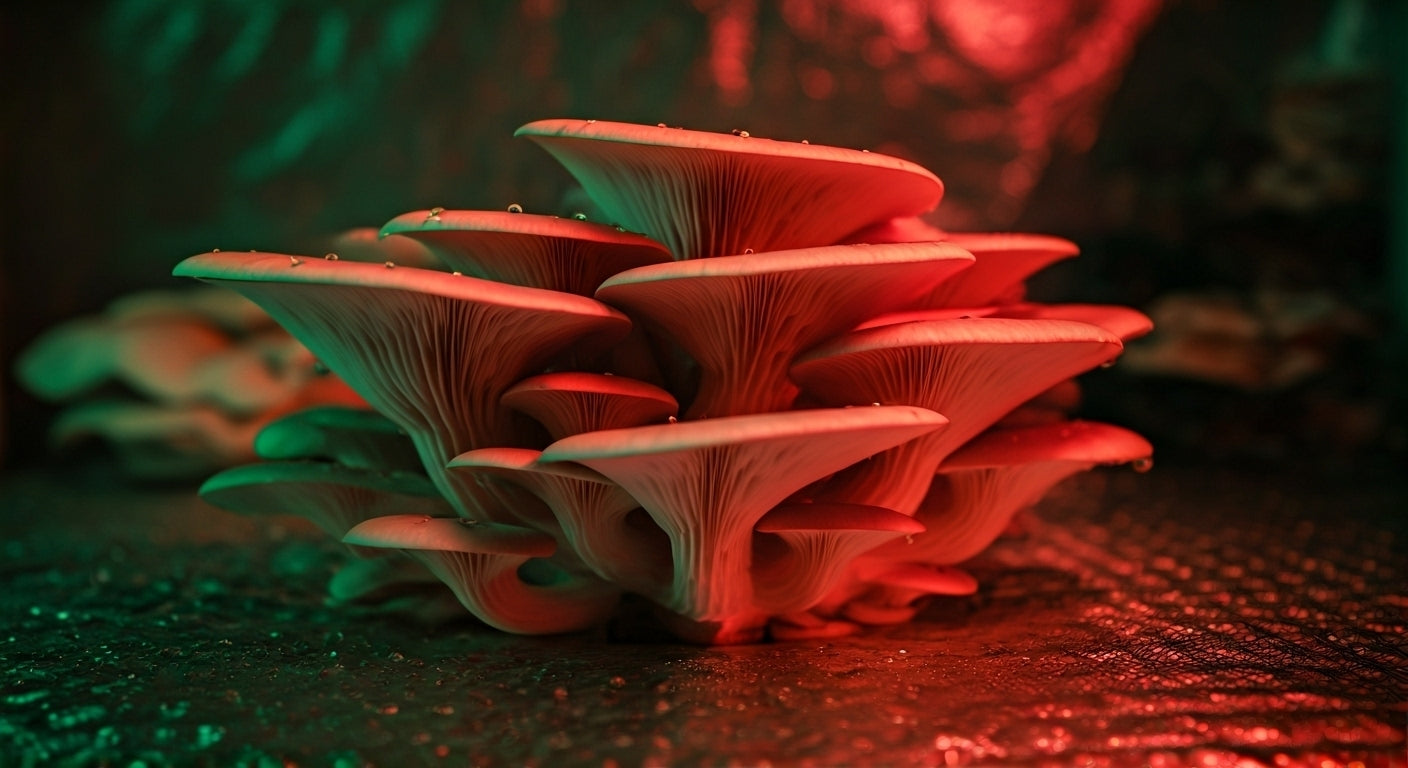
Can You Grow Mushrooms in a Grow Tent: The Complete Guide to Indoor Mushroom Cultivation
Growing mushrooms at home has become an increasingly popular hobby among indoor gardening enthusiasts, and using a grow tent provides the ideal controlled environment for successful mushroom cultivation. The answer to "can you grow mushrooms in a grow tent" is a resounding yes – in fact, grow tents offer numerous advantages that make mushroom growing more accessible and productive than ever before.
What Makes Grow Tents Perfect for Mushroom Cultivation
Controlled Environmental Conditions
Mushrooms require precise environmental conditions that can be challenging to maintain in open spaces. A Gorilla Grow Tent offers a controlled and adjustable space where you can regulate all of these factors, ensuring your mushrooms grow successfully from spawn to fruiting. The enclosed environment allows you to fine-tune temperature, humidity, and airflow – three critical factors for successful mushroom development.

Contamination Prevention
Mushrooms are highly sensitive to contaminants like mold and bacteria. By growing your mushrooms in a sealed grow tent, you reduce the risk of contamination, creating a cleaner environment for your fungi to flourish. This sealed environment acts as a protective barrier against airborne contaminants that could ruin your mushroom harvest.
Space Efficiency and Year-Round Growing
Modern grow tents maximize your growing potential without requiring an entire room. A mushroom grow tent allows you to maximize your growing space without taking over an entire room. Gorilla Grow Tents are designed to fit in small spaces, making them perfect for indoor cultivators who may be limited in space. Additionally, the controlled environment enables year-round mushroom production regardless of outdoor weather conditions.
Essential Equipment for Mushroom Grow Tent Setup
Gorilla Grow Tent Selection
When choosing the right grow tent for mushroom cultivation, size and features matter significantly. A smaller tent, such as a 2x2 or 3x3, can work well for smaller-scale mushroom production. For beginners, the Gorilla Clone Tent 24" offers an excellent entry point for mushroom cultivation with its compact 32"W x 24"D x 24"H dimensions.
For larger operations, consider the comprehensive 2x4 Grow Tent Kit which includes everything needed for professional-grade mushroom cultivation. Gorilla mushroom grow tent offers a choice of 11 sizes ranging from 4x4 feet to 10x20 feet.
Ventilation and Air Exchange Systems
Proper airflow is crucial for mushroom development. Our grow tents come with built-in ventilation ports that allow you to set up fans, filters, and ducting systems to ensure optimal airflow for your mushrooms. The ventilation system should provide continuous fresh air exchange while maintaining the high humidity levels mushrooms require.
Temperature and Humidity Control
Most mushroom species thrive in temperatures ranging from 60°F to 75°F (15°C to 24°C). Use a digital thermometer and hygrometer to monitor and adjust these parameters inside the grow tent. Maintaining humidity levels between 80-95% during fruiting stages is essential for proper mushroom development.
Best Mushroom Varieties for Grow Tent Cultivation
Oyster Mushrooms
Oyster Mushrooms: One of the easiest and most popular mushrooms to grow indoors, oyster mushrooms thrive in controlled environments and produce large yields. These versatile mushrooms adapt well to grow tent conditions and offer excellent results for beginners.
Shiitake Mushrooms
Shiitake mushrooms represent another excellent choice for grow tent cultivation. Starting with some of the more forgiving species, such as oyster mushrooms or shiitake mushrooms, is recommended for beginners. These varieties are more adaptable to different growing conditions and are a great introduction to mushroom cultivation.
Specialty Varieties
Advanced cultivators can explore specialty mushrooms including lion's mane, maitake, and enoki varieties. Each species has unique environmental requirements that can be precisely controlled within a grow tent environment.
Step-by-Step Mushroom Growing Process
Phase 1: Substrate Preparation
Mushrooms can be grown in various substrates, including straw, sawdust, or coffee grounds. Choose a growing medium based on the type of mushroom you want to cultivate. Prepare the substrate according to specific instructions, ensuring proper sterilization and moisture content.
Phase 2: Inoculation and Colonization
Once your growing medium is ready, it's time to introduce mushroom spawn or mycelium. Spawn is the "seed" for mushroom cultivation and can be purchased from reputable suppliers. Follow the instructions provided to distribute the spawn throughout the substrate evenly.
Phase 3: Fruiting Stage Management
During the fruiting stage, environmental control becomes critical. Keep a close eye on the growing conditions inside the mushroom grow room. Check the temperature, humidity, and lighting regularly. If the humidity levels drop, remove the room with water, and adjust the temperature as necessary. Ensure proper air circulation to prevent the buildup of carbon dioxide.

Lighting Requirements for Mushroom Growth
Understanding Mushroom Light Needs
While mushrooms don't require light for photosynthesis like traditional plants, they do need light to trigger healthy fruiting and proper development. The right mushroom grow light ensures that your mushrooms develop correctly and produce high yields.
Recommended Lighting Solutions
LED grow lights are an excellent option for mushrooms. They are energy-efficient, produce low heat, and offer a full light spectrum. For mushrooms, look for cool white LED lights with a color temperature of 5000K-6500K, which closely mimics natural daylight without generating too much heat.
Troubleshooting Common Issues
Contamination Management
Contamination can be a challenge in mushroom cultivation. To minimize the risk, maintain strict hygiene practices. Use gloves, sterilize your tools, and work in a clean environment. If you notice any unusual colors or odors in your growing container, it may indicate contamination.
Humidity and Ventilation Balance
Proper airflow and ventilation are essential for maintaining a healthy environment inside the grow room. Stagnant air can promote the growth of mold or bacteria. Consider installing an exhaust or small oscillating fan to ensure adequate air circulation.
Overwatering Prevention
While mushrooms require high humidity, overwatering can lead to problems such as mold or rot. Use a spray bottle or a misting system to water the growing substrate. Monitor the moisture levels and avoid excessive saturation.
Advanced Growing Techniques
Multi-Tier Growing Systems
Experienced cultivators can maximize their grow tent space by implementing multi-tier growing systems. This approach allows for simultaneous cultivation of different mushroom varieties or multiple harvests at various growth stages.
Automated Environmental Control
Modern grow tent setups can incorporate automated systems for temperature, humidity, and ventilation control. These systems maintain optimal conditions around the clock, reducing manual monitoring requirements and improving consistency.
Scaling Your Operation
As you gain experience and confidence in mushroom cultivation, you can explore advanced techniques to diversify your growing capabilities. Some techniques worth exploring include agar culture, liquid culture, cloning, and expanding to larger grow tent systems.
Harvesting and Post-Harvest Handling
Proper Harvesting Techniques
Depending on the species, mushrooms will take anywhere from a few weeks to a few months to mature. Harvest mushrooms when caps begin to open but before spore release for optimal flavor and texture.
Preservation Methods
If your harvest yields more mushrooms than you can immediately use, consider drying or preserving them. Dehydrating mushrooms allows you to store them for extended periods while retaining their flavor. Store dried mushrooms in an airtight container in a cool, dry place.
Conclusion: Your Path to Successful Mushroom Cultivation
Growing mushrooms in a grow tent offers unparalleled control over environmental conditions, leading to higher success rates and better yields compared to traditional growing methods. The investment in quality equipment like Gorilla Grow Tents pays dividends through multiple growing cycles, providing the durability and precision needed for consistent mushroom production.
Whether you're a beginner exploring oyster mushrooms or an experienced cultivator working with specialty varieties, a properly configured grow tent creates the ideal environment for mushroom cultivation success. With careful attention to environmental controls, proper equipment selection, and consistent monitoring, you can enjoy fresh, homegrown mushrooms year-round while developing valuable cultivation skills that will serve you well as you expand your indoor growing operations.

Lena Myles
I'm a mushroom enthusiast and home cook based in Oregon. I'm passionate about foraging and creating fungi-focused recipes, especially delicious, plant-based dishes using gourmet mushrooms like trumpet, shiitake, and oyster. When I’m not in the kitchen, you’ll usually find me wandering the woods in search of new wild flavors.


